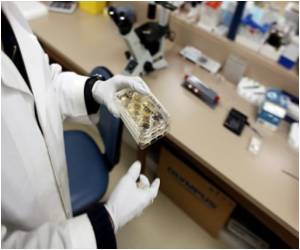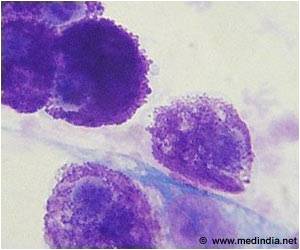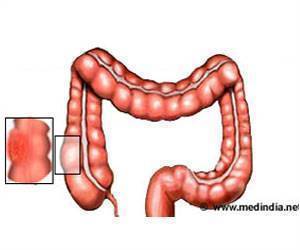Experts who hailed Monday's Nobel awarded to three leaders in the field saya that vesicles, the bubble-shaped vessels that transport molecules within cells, may hold the secret to halting viruses or even combating Alzheimer's.

Their job is to transport molecules within and between cells.
Vesicles are crucial for the very functioning of cells -- shipping everything from neurotransmitter molecules responsible for signalling in the brain to hormones and immune responses to viral intruders.
When things go well, the vesicles are like trucks providing just-in-time delivery of parts for a factory buzzing with activity.
But if vesicles arrive too late or too early, or go to the wrong place, they can cause the cell to malfunction -- a potential trigger for disease. They also allow viruses to propagate by transporting viral proteins within cells.
"Very fundamental processes in life depend on vesicular transport," Dick Hoekstra, cell biology professor at the University of Groningen in the Netherlands, told AFP.
Advertisement
Inside cells is a hive of machinery that cranks out proteins, the molecules that sustain the cell and enable it to function, but also help it work with other cells.
Advertisement
The vesicles are coated with fatty membranes that "fuse" with the membranes on other vesicles, to pass on their cargo, a bit like water drops merging on a window pane.
They are able to identify their destination thanks to an "address code" of proteins studding the membrane. The proteins are like the matching sides of a zip: when they fit, two vesicles merge and the cargo is transferred.
"Its almost like a bubble hitting a wall and the contents of that bubble are then released," explained Mike Cousins, chairman of neuronal cell biology at Edinburgh University.
Each vesicle is about 50 nanometres (billionths of a metre) in diameter and transfers about a million molecules at a time.
Vesicles continually "bud off" from one cell membrane, bulging out to fuse to another, then releasing their precious, molecular cargo.
The three men honoured by the Nobel Assembly on Monday, US duo James Rothman and Randy Schekman and German-born Thomas Suedhof, have put decades of work into shedding more light on how vesicles work -- and why, sometimes, they do not.
Schekman figured out which genes were responsible for mixing up the transport system, which can cause vesicles to pile up in parts of the cell like a traffic jam.
Rothman discovered that a protein complex enables vesicles to dock and fuse.
Suedhof took the work further by showing more precisely how the protein "zipper" opens up to allow neurotransmitters to move between nerve cells in the brain.
The knowledge has helped us understand the important role that vesicles may be playing in diseases like diabetes and immune disorders.
"In the last five years it is looking like presynaptic disfunction, messed-up vesicle transport, is underlying a lot of potential neurodevelopmental disorders like... autism," said Cousins.
"There is also accumulating evidence that it is going to be very important in neurodegenerative diseases: Alzheimer’s disease, Parkinson’s disease."
Hoekstra said better understanding of vesicles may also benefit other medical fields: his department is researching vesicle-like ways of bypassing the so-called blood-brain barrier, a circulatory cut-off between blood flow to the brain and the rest of the body, to make it easier for doctors to administer drugs to the organ.
Source-AFP









